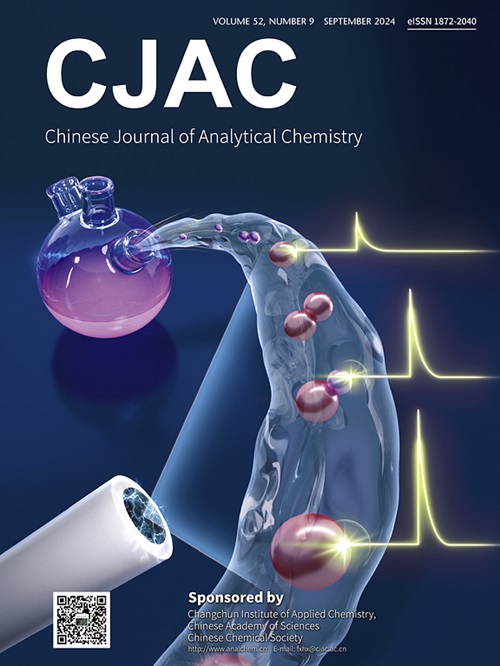基于微流控技术的阿尔茨海默病检测:技术原理、管状结构和测试样品
IF 1.3
4区 化学
Q4 CHEMISTRY, ANALYTICAL
引用次数: 0
摘要
阿尔茨海默病(AD)是一种严重威胁人类健康的神经退行性疾病,全球患者众多。随着人口老龄化,患者数量不断增加,给家庭和社会带来了负担。目前缺乏有效的治疗方法,早期筛查和诊断AD至关重要。微流控技术(MFC)具有小型化和高检测通量的特点,为AD检测提供了新的前景。本文综述了基于MFC的AD检测方法。根据技术原理分类,它们包括电化学、光学、生物亲和色谱以及与其他技术的集成,每种技术都有其优点和缺点。在管状结构方面,有单通道、多通道阵列、微通道-反应室组合等,以满足不同的检测需求。关于测试样本,它们包括蛋白质、基因、细胞、血液和组织样本。尽管每种样品的检测都存在挑战,但它们都有潜力。MFC在阿尔茨海默病的筛查和诊断方面发展迅速,具有很大的潜力。然而,准确性、成本和操作复杂性等问题仍然存在。未来应进一步优化技术和方法,探索多学科的整合、组合和个性化检测方案,实现精准、高效的早期筛查和诊断,从而帮助阿尔茨海默病的治疗和预防。本文章由计算机程序翻译,如有差异,请以英文原文为准。
Detection of Alzheimer's disease based on microfluidic technology: Technical principles, tubular structures and testing samples
Alzheimer's disease (AD), a neurodegenerative ailment severely threatening human health, has numerous patients globally. The patient count rises with the aging population, burdening families and society. Lacking effective treatments currently, early screening and diagnosis of AD are of utmost importance. Microfluidic technology (MFC) offers new prospects for AD detection, featuring miniaturization and high detecting flux. This review focuses on AD detection methods based on MFC. Categorized by technical principles, they include electrochemical, optical, bioaffinity chromatography, and integrations with other techniques, each with pros and cons. In terms of tubular structures, there are single-channel, multi-channel array, microchannel-reaction chamber combinations, and others, fulfilling different detection needs. Regarding testing samples, they span protein, gene, cell, blood, and tissue samples. Despite challenges in each sample's detection, all hold potential. The MFC develops rapidly with great potential in AD screening and diagnosis. However, issues like accuracy, cost, and operational complexity remain. Future efforts should focus on optimizing technologies and methods, exploring multidisciplinary integrations, combinations, and personalized detection schemes to achieve precise and efficient early screening and diagnosis, thus aiding AD treatment and prevention.
求助全文
通过发布文献求助,成功后即可免费获取论文全文。
去求助
来源期刊
CiteScore
3.60
自引率
25.00%
发文量
17223
审稿时长
35 days
期刊介绍:
Chinese Journal of Analytical Chemistry(CJAC) is an academic journal of analytical chemistry established in 1972 and sponsored by the Chinese Chemical Society and Changchun Institute of Applied Chemistry, Chinese Academy of Sciences. Its objectives are to report the original scientific research achievements and review the recent development of analytical chemistry in all areas. The journal sets up 5 columns including Research Papers, Research Notes, Experimental Technique and Instrument, Review and Progress and Summary Accounts. The journal published monthly in Chinese language. A detailed abstract, keywords and the titles of figures and tables are provided in English, except column of Summary Accounts. Prof. Wang Erkang, an outstanding analytical chemist, academician of Chinese Academy of Sciences & Third World Academy of Sciences, holds the post of the Editor-in-chief.

 求助内容:
求助内容: 应助结果提醒方式:
应助结果提醒方式:


